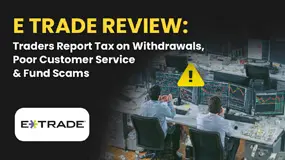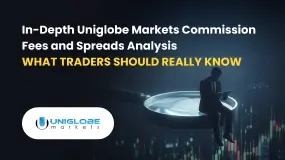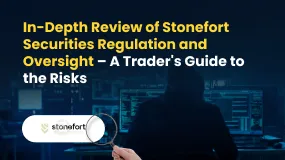简体中文
繁體中文
English
Pусский
日本語
ภาษาไทย
Tiếng Việt
Bahasa Indonesia
Español
हिन्दी
Filippiiniläinen
Français
Deutsch
Português
Türkçe
한국어
العربية
THE VALUE OF ANALYSIS IN THE FOREIGN EXCHANGE MARKET
Abstract:The two primary types of analysis used in the forex market are technical and fundamental. The best sort of analysis to utilize and if traders should mix the two to improve their trading decisions have been hotly contested topics since the invention of trading.

The two primary types of analysis used in the forex market are technical and fundamental. The best sort of analysis to utilize and if traders should mix the two to improve their trading decisions have been hotly contested topics since the invention of trading. The efficacy of both technical and fundamental analysis is questioned by the “efcient-market hypothesis,” which holds that market prices are intrinsically unpredictable. All trading analysts and experts agree that both methods of analysis offer benefits and features that can aid traders, despite the fact that disagreements over the best type of analysis have raged for years. Analysts agree that mastering one or both forms of analysis could require a lifetime of work and application. While candlestick analysis is said to have originated in China in the 18th century using a method developed by Homma Munehisa to estimate demand for basic commodities like rice, technical analysis was first applied by Dutch traders and merchants in the 1700s.
The majority of technical indicators, according to many fundamental experts, are “self-fulfilling and lagging,” which prevents them from working. As a result, they cannot be used. The most widely used indicators, including PSAR (parabolic stop and reverse), Bollinger bands, stochastics, DMI, and MACD, could be called into doubt as to their usefulness and value.
Although many traders who use technical analysis in their trading strategy would definitely assert that employing indicators to enter and exit trades genuinely works, this is not universally true.
Ironically, even on a pretty plain, indicator-free chart, practically all fundamental analyst-traders continue to employ technical analysis techniques. They might choose between candlestick, Heikin-Ashi, line, pin-bar, etc. as their preferred price display method. Alternately, they may employ a pretty simple trading strategy, such as higher lows, lower highs, moving averages, head and shoulders patterns, fractals, pivot points, Fibonacci retracement, and drawing trend lines, among other things. A chart can appear as crowded as one with many of the aforementioned indicators when some of these algorithms are applied to it. Also, aren't decisions about where to set stops and put limit orders also examples of technical analysis?
So, even traders who only use fundamental analysis must employ technical analysis; they merely choose to focus on news, events, and data releases while making or confirming their conclusions. And they'll stay up to date on all releases, possibly using Twitter or spending more money to use something called “a squawk,” in an effort to stay ahead of the market and their trading decisions.
What is Technical Analysis in Forex?
Technical analysis, sometimes known as TA, is the process of predicting future changes in financial price based on an analysis of previous price changes. Using technical analysis, traders may predict how prices are likely to change over time. A wide range of indicators and charts are used in technical analysis to show price changes over a chosen time period. Traders attempt to predict the future direction of the price by examining statistics acquired from trading activities, such as volume and price change.
News is not often given much consideration by technical analysis traders.
They hold the opinion that a chart will eventually expose the detail and possibly the drama of an economic news release. In fact, pricing on a chart can frequently respond before traders have had a chance to read the news or see data presented in order to make a decision. This might be a result of algorithmic/high frequency traders being able to react to news quickly before many other traders can.
What is Fundamental Analysis in Forex?
Fundamental analysts look at an investment's fundamental value; in the case of foreign exchange, this necessitates a careful investigation of the economic factors influencing the value of a country's currency.
The movement of a currency is influenced by numerous important fundamental elements, many of which are included in what are referred to as “economic indicators”.
Economic indicators are statements and information about a nation's economy that are made public by the government or a commercial organization like Markit. Economic reports are the primary tool used to assess a nation's economic health.

Disclaimer:
The views in this article only represent the author's personal views, and do not constitute investment advice on this platform. This platform does not guarantee the accuracy, completeness and timeliness of the information in the article, and will not be liable for any loss caused by the use of or reliance on the information in the article.
Read more

E TRADE Review: Traders Report Tax on Withdrawals, Poor Customer Service & Fund Scams
Has your E Trade forex trading account been charged a withholding tax fee? Did your account get blocked because of multiple deposits? Did you have to constantly call the officials to unblock your account? Failed to open a premium savings account despite submitting multiple documents? Is fund transfer too much of a hassle at E Trade? Did you find the E Trade customer support service not helpful? In this E Trade review article, we have shared certain complaints. Take a look!

mBank Exposed: Top Reasons Why Customers are Giving Thumbs Down to This Bank
Do you find mBank services too slow or unresponsive? Do you find your account getting blocked? Failing to access your account online due to several systemic glitches? Can’t perform the transactions on the mBank app? Do you also witness inappropriate stop-level trade execution by the financial services provider? You are not alone! Frustrated by these unfortunate circumstances, many of its clients have shared negative mBank reviews online. In this article, we have shared some of the reviews. Read on!

In-Depth Uniglobe Markets Commission Fees and Spreads Analysis – What Traders Should Really Know
For experienced traders, the cost of execution is a critical factor in broker selection. Low spreads, fair commissions, and transparent pricing can be the difference between a profitable and a losing strategy over the long term. This has led many to scrutinize the offerings of brokers like Uniglobe Markets, which presents a tiered account structure promising competitive conditions. However, a professional evaluation demands more than a surface-level look at marketing claims. It requires a deep, data-driven analysis of the real trading costs, set against the backdrop of the broker's operational integrity and safety. This comprehensive Uniglobe Markets commission fees and spreads analysis will deconstruct the broker's pricing model, examining its account types, typical spreads, commission policies, and potential ancillary costs. Using data primarily sourced from the global broker inquiry platform WikiFX, we will provide a clear-eyed view of the Uniglobe Markets spreads commissions prici

In-Depth Review of Stonefort Securities Regulation and Oversight – A Trader's Guide to the Risks
For experienced traders, the process of selecting a new broker transcends a simple comparison of spreads and leverage. It is a meticulous due diligence exercise where the integrity of the broker's regulatory framework is paramount. Stonefort Securities, a relatively new entrant in the crowded brokerage space, presents a complex and often contradictory profile. On one hand, it boasts a modern MT5 platform and a stream of positive user testimonials. On the other hand, it is shadowed by severe regulatory warnings that question the very foundation of its operations. This in-depth review focuses on the core issue for any long-term trader: Stonefort Securities regulation and oversight. We will dissect the broker's corporate structure, scrutinize its licensing claims, and analyze what the data implies for trader protection and fund security. For traders evaluating whether Stonefort Securities is a trustworthy partner, understanding these details is not just important—it is essential.
WikiFX Broker
Latest News
In-Depth Uniglobe Markets Commission Fees and Spreads Analysis – What Traders Should Really Know
WikiFX's New Evaluation of ATM Capital LTD: Does its License Protect the Arab Investor?
Is Axi Legit? A Data-Driven Analysis of Its Regulatory Standing and Trader Feedback
How a Fake Moomoo Ad Led to the “New Dream Voyage 5” Scam
FXPesa Review: Are Traders Facing High Slippage, Fund Losses & Withdrawal Denials?
Trive Investigation: High Score, Hidden Risk - The Profit Paradox
CMC Markets Australia Revenue Surges 34%, But High-Net-Worth Clients Face Tax Phishing Threat
Bessent believes there won't be a recession in 2026 but says some sectors are challenged
mBank Exposed: Top Reasons Why Customers are Giving Thumbs Down to This Bank
Young Singaporean Trader Grew USD 52 into a USD 107,700 Portfolio
Currency Calculator



